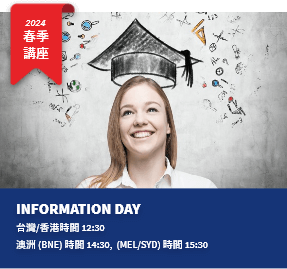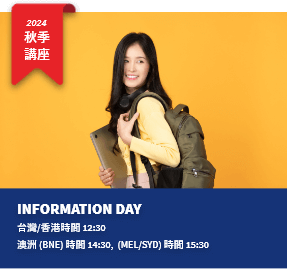2017入籍順利! 澳洲入籍考試模擬題庫附答案
新年快樂~恭喜大家入籍順利! 以下是澳大利亞入籍考試模擬題庫(附答案):
1. When is Boxing Day?
a. 26 December
b. 25 December
c. 30 May
d. 26 January
2. At the end of World War II, there was an oversupply of labour in Australia: true or false?
a. False
b. True
3. In 1967 which country took over from Britain as Australia’s leading trading partner?
a. Japan
b. China
c. New Zealand
4. Why did the Australian government move in the 1980s and 1990s to remove protections on the country’s economy?
a. It wanted more control of the economy
b. The government believed this would reduce wages
c. It was believed the economy would grow more strongly
5. Where is the Kokoda Track?
a. Singapore
b. Japan
c. Papua New Guinea
6. Religious laws have no legal status within Australia: true or false?
a. False
b. True
7. Why is Governor Lachlan Macquarie remembered with great affection?
a. Because he gave great banquets at government house
b. Because he treated reformed convicts as if they had never offended
c. Because he released so many convicts
8. Why has Australia become a sport-crazy nation?
a. Mass unemployment allowed people to play sport
b. Playing sport is a legal requirement
c. People have more leisure time, the climate is good and there is plenty of open space
9. Which take prevalence: state laws or Commonwealth laws?
a. State laws always prevail over Commonwealth laws
b. Commonwealth laws prevail over state laws
c. Commonwealth laws prevail, except for laws relating to violent crime
10. An individual’s vote in an election is secret: true or false?
a. False
b. True
11. What is the capital of Australia?
a. Sydney
b. Melbourne
c. Canberra
d. Brisbane
12. The name Australia derives from the Latin word Australis. What does Australis mean?
a. Of the south
b. Dry
c. Big
13. Which controversial government policy began to be dismantled in 1967?
a. The White Australia Policy
b. The Aboriginal Settlements Policy
c. The Snowy Mountains Policy
14. When was the Aboriginal flag first displayed?
a. 30 May 1955
b. 12 July 1971
c. 3 September 1901
15. In which two years has Australia hosted the Olympic Games?
a. 1976 and 2004
b. 1984 and 1992
c. 1956 and 2000
16. In Australia, everyone must practise the official state religion: true or false?
a. True
b. False
17. When is New Year’s Day celebrated in Australia?
a. 26 December
b. 25 December
c. 26 January
d. 1 January
18. Which state is also known as the ‘Festival State’?
a. Victoria
b. South Australia
c. New South Wales
d. Queensland
19. With which sport are the names Sedgman, McGregor, Hoad and Rosewall associated?
a. Tennis
b. Netball
c. Basketball
20. What happened at the Ballarat goldfield in 1854?
a. Many gold diggers were killed by a flash flood
b. The world’s largest gold nugget was discovered
c. Gold diggers staged a large protest
21. What is the national gemstone of Australia?
a. Opal
b. Zinc
c. Gold
d. Diamond
22. It is compulsory in Australia to join a trade union: true or false?
a. False
b. True
23. Which of these statements is correct about political parties in Australia?
a. The Liberal Party believes in high levels of government activity
b. The Labor Party believes in selling off government industries
c. The Labor Party believes in using government to help workers
24. What is Australia’s national anthem?
a. Advance Australia Fair
b. Waltzing Matilda
c. God Save the Queen
25. Why is Nancy Bird Walton remembered by Australians?
a. She was the wife of Australia’s first Prime Minister
b. She was the first woman to win a gold medal for Australia at the Olympic Games
c. She was the first women to gain a pilot’s licence and to employed in the aviation industry
26. The separation of powers in the Australian Constitution establishes three arms of national government. What are they?
a. The legislative arm, the executive arm, the judicial arm
b. The legislative arm, the elite arm, the local arm
c. The legislative arm, the police arm, the military arm
27. What are the colours of the Torres Strait Islander flag?
a. Red, black and yellow
b. Gold, green and white
c. Red, white and blue
d. Blue, green, black and white
28. What does Christmas Day celebrate?
a. The miracles of Jesus Christ
b. The resurrection of Jesus Christ
c. The death of Jesus Christ
d. The birth of Jesus Christ
29. Who was commander of the Australian forces during World War I?
a. Lachlan Macquarie
b. Edmund Barton
c. John Monash
30. Who appoints the Governor-General?
a. The Prime Minister
b. The Queen
c. The Commonwealth Parliament
31. Which two states are Rugby Union and Rugby League popular in?
a. Queensland and New South Wales
b. South Australia and Victoria
c. Western Australia and Tasmania
32. Who is the head of the Australian Government?
a. The President of the Senate
b. The Prime Minister
c. The Governor-General
d. The Queen
33. Who was the first Prime Minister of Australia?
a. Edmund Barton
b. Sir Henry Parkes
c. Rod Laver
34. Equality under the law means what for Australians?
a. Government agencies can treat someone differently because of their political beliefs
b. Someone’s culture background can affect how they are treated in the workplace
c. Nobody should be discriminated against because of their race or ethnicity
35. What were the nationalities of the explorers who discovered Australia in the 17th century?
a. Italian and Norwegian
b. Portuguese and Dutch
c. English and French
36. Which political party was once known as the Country Party?
a. The National Party
b. The Liberal Party
c. The Labor Party
37. How many convicts came to Australia from Britain during the 19th century?
a. Less than 1,000
b. Between 10,000 and 20,000
c. More than 160,000
38. What was the motivation for many of the people coming to Australia since 1945?
a. The discovery of rich oil and mineral reserves
b. They were forced to come as convicted criminals
c. They had family commitments or a desire to escape poverty, war or persecution
39. What has the Eureka rebellion of 1854 become a symbol for?
a. The power of natural forces
b. Good government
c. Protest and popular rights
40. Australian national government draws on the democratic traditions of which other country, other than Britain?
a. United States of America
b. Italy
c. Germany
41. How long have Indigenous Australians been living in Australia?
a. Over 80,000 years
b. Between 60,000 and 80,000 years
c. Between 40,000 and 60,000 years
d. Between 20,000 and 40,000 years
42. Who is the native Australian plant, the banksia, named after?
a. James Cook
b. Joseph Banks
c. Lachlan Macquarie
43. All Australians are required to follow Judeo-Christian ethics: true or false?
a. False
b. True
44. What percentage of Australia’s population were born overseas?
a. 46%
b. 37%
c. 22%
d. 8%
45. What is Australia’s national anthem
a. Advance Australia Fair
b. Waltzing Matilda
c. God Save the Queen
46. What name are Australian soldiers often known by?
a. Shovels
b. Diggers
c. Builders
47. What happened in the 1850s that triggered a new wave of migration to Australia?
a. Land was available for free
b. The British government agreed to pay for most of the voyage
c. Gold was discovered
48. What did Aboriginal people do, in protest at their treatment, on the 150th anniversary of European settlement in 1938?
a. Staged a day of mourning in Sydney
b. Staged a cultural gathering at Ayers Rock/Uluru
c. Staged a national walkout from workplaces
49. 3 What is the name of the passage of water between Australia and Tasmania?
a. Torres Strait
b. Macquarie Strait
c. Bass Strait
d. Cook Strait
50. Which of these statements is correct about the Queen’s role in Australia?
a. The Queen makes all final decisions regarding government in Australia
b. The Queen does not play a day-to-day role in Australia’s government
c. The Queen shares power equally with the Prime Minister
51. How does the standard of living in Australia compare to that in other countries?
a. It is low compared to most of the world’s large industrial economies
b. It is among the top 10 in the world
c. It is similar to most undeveloped countries
52. What is generally agreed to be the greatest killer of Aboriginal people since European settlement?
a. Disease
b. War
c. Poverty
53. What special day is held on 11 November each year?
a. Christmas Day
b. Anzac Day
c. Remembrance Day
54. What colours are the Aboriginal flag?
a. Blue, green, black and white
b. Red, black and yellow
c. Gold, green and white
d. Red, white and blue
55. When did convicts stop coming to mainland Australia?
a. 1760
b. 1945
c. 1840
56. How wide is Australia from east to west?
a. 8,000 kilometres
b. 6,000 kilometres
c. 4,000 kilometres
d. 2,000 kilometres
57. What was discovered in Kalgoorlie in Western Australia in the 1890s?
a. Coal
b. Gold
c. Oil
58. What made Australia’s first European settlers unique?
a. They were convicts
b. They were American
c. They were English
59. All Australians are free to say or write what they think about any subject, issue or person, so long as they do not endanger people, defame anyone or obstruct the free speech of others: true or false
a. False
b. True
60. Which military campaign in 1915 resulted in 25,000 Australian casualties?
a. Gallipoli
b. Guadalcanal
c. Passchendaele
61. When was the Australian Capital Territory established?
a. 1911
b. 1901
c. 1840
d. 1788
62. After World War II Australia operated a large scale programme to bring migrants from countries of which continent?
a. Africa
b. Asia
c. Europe
63. What is Australia’s national language?
a. Australia has no official national language
b. Aboriginal
c. Australian
d. English
64. What percentage of Australians describe themselves as Christian?
a. Three quarters
b. Half
c. One-third
d. Two-thirds
65. When will you say these words? ‘I pledge my loyalty to Australia and its people whose democratic beliefs I share’.
a. When you sing the Australian national anthem
b. When you say the Australian Citizenship Pledge
c. When you receive your Australian passport
66. Which authority agreed in 1824 that the name ‘Australia’ be used officially?
a. The Cabinet
b. The Commonwealth
c. The British Admiralty
67. In what year did the European settlement of Australia start?
a. 1829
b. 1803
c. 1788
d. 1606
68. What is an example of a matter that state and territory governments are responsible for?
a. Drains
b. Police
c. Rubbish collection
69. The Commonwealth Parliament has two houses. What are they called?
a. The House of Representatives and the Senate
b. Canberra and the Town Hall
c. The House of Lords and the House of Commons
70. In what year did Australia come together in a federation?
a. 1875
b. 1886
c. 1901
d. 1945
71. What is the capital of Queensland?
a. Brisbane
b. Darwin
c. Perth
d. Sydney
72. Who was Australia’s first international opera prima donna?
a. Nancy Bird Walton
b. Evonne Goolagong
c. Dame Nellie Melba
73. What was the name of the first women elected to the Commonwealth Parliament?
a. Dame Enid Lyons
b. Nancy Bird Walton
c. Evonne Goolagong
74. What did Edith Cowan achieve for the first time in 1923?
a. She became Australia’s first female Prime Minister
b. She flew solo across Australia
c. She was the first woman elected to a parliament in Australia
75. What was the outcome of an attempt to make Australia a republic in 1999?
a. It was successful
b. It was defeated
c. It was delayed for ten years
76. When was the Australian flag first flown?
a. 12 July 1971
b. 30 May 1955
c. 3 September 1901
77. What was the name of James Cook’s ship?
a. The Endeavour
b. The Beagle
c. The Enterprise
78. How many states are there in Australia?
a. Nine
b. Eight
c. Two
d. Six
79. An individual’s vote in an election is a publicly viewable document: true or false
a. False
b. True
80. How tall is Australia from north to south?
a. 10,000 kilometres
b. 8,800 kilometres
c. 5,500 kilometres
d. 3,700 kilometres
81. Australian soldiers entered World War I in 1915 with an attack on which country?
a. Italy
b. Turkey
c. Germany
82. In which House of Parliament do all states, regardless of population, have the same number of representatives?
a. The Senate
b. The House of Representatives
c. The Queensland State Parliament
83. When is Anzac Day celebrated in Australia?
a. 1 October
b. 25 April
c. 30 May
d. 26 January
84. What are Australia’s national colours?
a. Black and white
b. Green and gold
c. Red, white and blue
85. The Aboriginal flag is not an official flag of Australia: true or false?
a. False
b. True
86. Which of the following statements is correct?
a. There were hundreds of indigenous communities living in Australia before settlement
b. The Aboriginal people are one people with a common language and culture
c. Aboriginal people can be divided into eleven distinct regional communities
87. What is the largest state in Australia?
a. Queensland
b. South Australia
c. Northern Territory
d. Western Australia
88. Which state governor took an interest in Aboriginal people, running a school for their children and offering them land for farming?
a. Governor Maccquarie
b. Governor Deakin
c. Governor Bartong
89. All Australians are entitled to protest against the government: true or false?
a. False
b. True
90. Who appoints Ministers?
a. The Queen
b. The Prime Minister
c. The Governor-General
91. Thousands of Australian and British prisoners-of-war died in the construction of what railway?
a. Thai-Burma railway
b. Thai-Malaya railway
c. Thai-Japan railway
92. What name did German and Italian soldiers give to Australian soldiers in North Africa during World War II?
a. Donkeys of Tobruk
b. Rodents of Tobruk
c. Rats of Tobruk
93. Which of the following sports was invented in Australia?
a. Badminton
b. Rugby League
c. Australian Rules Football
94. Which court decision, in 1992, restored land to Aboriginal people, if they had retained their traditional ties to it?
a. The Mabo decision
b. The Alice Springs decision
c. The Uluru decision
95. Who usually performs the role of Prime Minister?
a. The leader of the party with a majority in the House of Representatives
b. The parliamentarian who has served the longest in the House of Representatives
c. The top judge in Australia
96. Even though Aboriginal people had the protection of British law, it was rare for what to occur?
a. For white settlers to be punished for killing Aboriginals
b. For Aboriginals to be punished for breaking the law
c. For Aboriginals to be arrested by the police
97. What is the first line of Australia’s national anthem?
a. There is a land where summer skies
b. Australians all let us rejoice
c. God save our gracious Queen
d. Once a jolly swagman camped by a billabong
98. Which verse, written by Banjo Paterson, has become an unofficial national anthem?
a. Advance Australia Fair
b. Waltzing Matilda
c. A Land Down Under
99. Which Australian tennis player became the first player to win the ‘Grand Slam’ twice?
a. Sir Donald Bradman
b. Rod Laver
c. Ken Rosewall
100. Where did Britain decide to send convicts in 1786?
a. New South Wales
b. Queensland
c. New Zealand
101. Only men are allowed to hold positions in government: true or false?
a. False
b. True
102. When is Wattle Day?
a. 1 September
b. 25 April
c. 2 February
d. 26 January
103. In 1642 who discovered what is now known as Tasmania?
a. Edmund Barton
b. James Cook
c. Abel Tasman
104. What name is often used to refer to the remote inland areas of Australia?
a. The back country
b. The high country
c. The outback
105. Which of the following statements is correct about Britain’s influence in Australia?
a. Britain’s influence in Australia is stronger than ever
b. Australia’s formal ties with Britain have diminished over time
c. Britain has no influence in Australia
106. What is the capital of the Northern Territory?
a. Perth
b. Canberra
c. Darwin
d. Alice Springs
107. How long have Aboriginal and Torres Strait Islander people been living in Australia?
a. 40,000 – 60,000 years
b. 80,000 – 120,000 years
c. 150,000 – 200,000 years
108. Which two states or territories have the most members within the House of Representatives?
a. New South Wales and Victoria
b. Queensland and Tasmania
c. Western Australia and South Australia
109. Australian laws do not apply to politicians or police: true or false?
a. False
b. True
110. When did Australia introduce decimal currency?
a. 1982
b. 1974
c. 1966
d. 1945
111. What is the population of Australia?
a. 46 million
b. 33 million
c. 21 million
d. 15 million
112. What is the voting age in Australia?
a. 21 years old
b. 20 years old
c. 18 years old
d. 16 years old
113. What term describes the system of national government in Australia?
a. Australia is a parliamentary democracy
b. Australia is a communist state
c. Australia is run as a dictatorship
114. Which political party has also been known as the Nationalist Party and the United Australia Party?
a. Freedom Party
b. Labor Party
c. Liberal Party
115. Why did Australia fight with Britain in both World Wars?
a. Because Britain did not have its own army
b. Because Germany had invaded Australia
c. To keep the British Empire strong and so protect itself
116. What does the Snowy Mountains Scheme provide?
a. Labour
b. Bank loans
c. Electricity
117. What is the name given to the judgement that set the national minimum wage?
a. The Harvester judgement
b. The Farming judgement
c. The Mining judgement
118. Voting is voluntary in Australian federal, state and territory elections: true or false?
a. False
b. True
119. How many parts of Australia are there on the World Heritage List?
a. 17 parts
b. 10 parts
c. 5 parts
d. 3 parts
120. Who became an international aviation figure when they flew from the United States to Australia?
a. Donald Bradman
b. Nancy Bird Walton
c. Charles Kingsford-Smith
121. Government ministers, the Australian Public Service and other Australian government agencies are encompassed by what term?
a. Executive Government
b. Elite Government
c. Local Government
122. The principal decision making body of the Australian Government, a group of ministers, is called what?
a. The Committee
b. The Cabinet
c. The Elite Panel
123. Who are Australia’s top four overseas trading partners
a. Britain, India, Thailand, South America
b. Britain, Indonesia, Singapore and New Zealand
c. Japan, China, USA and South Korea
124. What were formed after drought and depression arrived in Australia in order to protect workers’ wages and conditions?
a. Criminal gangs
b. Police associations
c. Trade unions
125. What was the name of the scheme carried out after World War II that the Australian government hoped would revitalise Australia?
a. The Queensland Scheme
b. The Macquarie Scheme
c. The Snowy Mountains Scheme
126. Soldiers from which country were stopped by Australian troops at the Kokoda Track?
a. Japan
b. Italy
c. Germany
127. Which military tradition was forged on 25 April 1915 at a battle in Turkey?
a. ANZAC
b. ANZUS
c. Remembrance Day
128. When is Australia Day celebrated?
a. 1 October
b. 25 April
c. 30 May
d. 26 January
129. Why was the name Canberra, chosen for the nation’s capital?
a. It was formed using place names from the British empire
b. It was the name of the city’s designer – William Canberra
c. It comes from the local Aboriginal word meaning ‘meeting place’
130. How many Aboriginal people and Torres Strait Islanders are there in Australia today?
a. 483,000
b. 243,000
c. 820,000
d. 34,000
131. What happened in Sydney’s Centennial Park on 1 January 1901, the first day of the new century?
a. The first Australian Government was sworn in
b. A constitutional convention was held
c. Australia declared war on Germany
132. An individual’s vote in an election is a publicly viewable document: true or false?
a. False
b. True
133. How long have humans inhabited Australia?
a. About 2,000 years
b. At least 40,000 to 60,000 years
c. At least 200,000 to 300,000 years
134. What did Burke and Wills attempt to do in 1860?
a. To convert Aboriginal people to Christianity
b. To sail around Australia
c. To cross the Australian continent from south to north
135. Who was Australia’s first governor?
a. Arthur Phillip
b. Lachlan Macquarie
c. Edmund Barton
d. Sir George Reid
136. What is the function of the Australian constitution?
a. It sets out the basic rules for the government of Australia
b. It determines who sits in parliament
c. It describes all laws in the country
Liked this video?
Subscribe to channel AMECLatest Articles
- Career Path
- Living in Australia
- Migrate to Taiwan
- Migration News
- Study Options
- Testimonials
- Travel in AUS










